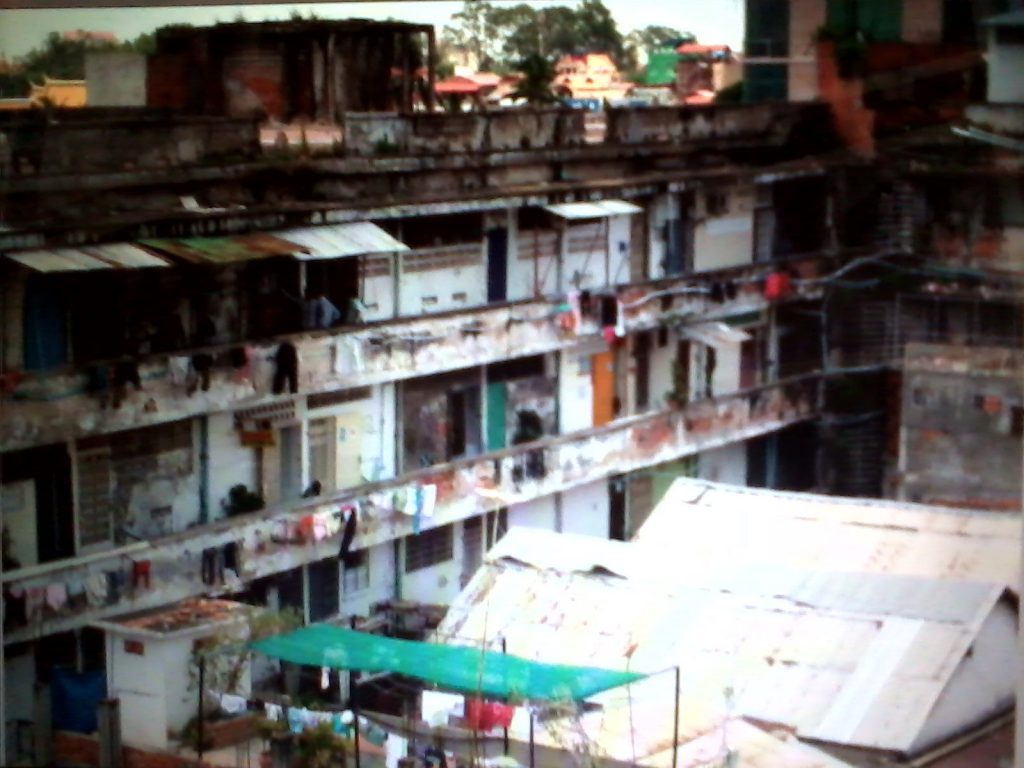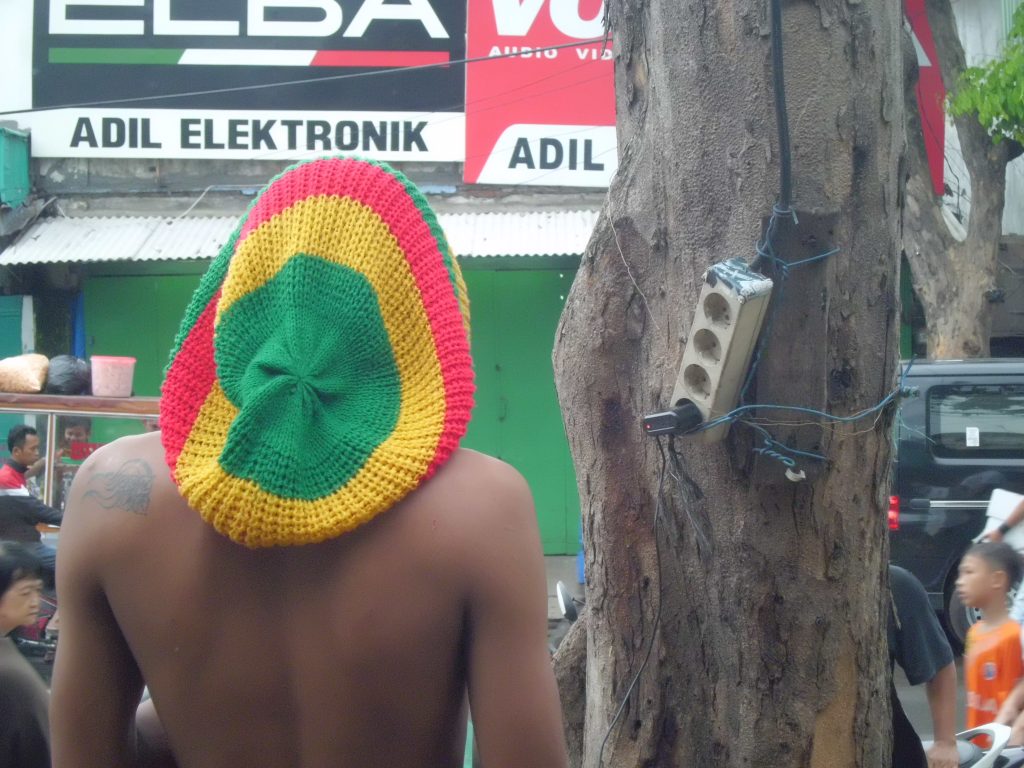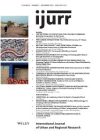Various instantiations of urban modernity have often relied upon designating particular kinds of residents and ways of making urban life “black.” In some contexts this attribution was applied to people who long lived under the connotations of blackness as the absence of subjectivity, as incomplete human beings. In other contexts, blackness was something attributed more to particular urban spaces as a means of devaluing their residents and establishing these spaces as incomplete in terms of emerging norms and values of the “modern city.” Attributions of blackness also signaled the impenetrability of particular populations and districts, the futility of management by any other means except segregation and the imposition of strongly enforced boundaries.
Yet, the “insides” of black cities, faced with varying dimensions of attribution and spatial and political circumscriptions, could be productive of ways of living that embodied enactments of urbanization whose potentialities might always threaten the consolidation of any particular formation of power. After all, urbanization is the possibility of incessant becoming, the intersection and constitution of heterogeneities whose trajectories, dispositions can never be definitively mapped or controlled. Thus, “black cities” came to represent particular dangers, and to a large extent could become the danger they represented—i.e. the danger of collective productivity, of lives intertwined in ways that continuously deferred the possibilities of categorization. Such cities raised questions about what it meant to “have a body”, and the various ways in which collective force might be amassed, not bound to the strictures of “society” and organization.
Black cities everywhere are increasingly under threat. Sometimes this takes place because of their explicit “blackness.” At other times, because they indicate unacceptable impoverishment or disorder, or because they have long assumed locational advantages and economic resourcefulness that now becomes objects of theft. Lima, Los Angeles, Caracas, Salvador, Luanda, Lagos, Mogadishu, Cairo, Muscat, Mumbai, Kolkata, Yangon, Jakarta, Manila, Chicago, Port Moseby, Halifax, London, Marseilles, Palermo, and Casablanca (the list could go on) all exude, at least in some of their districts, varying histories of urbanization enfolding some kind of designation of black city. The threat of erasure takes various forms. In addition to the familiar devices of gentrification and urban renewal, the erasure takes place, in part, through an increasingly widespread and institutionalized view of the city as an anachronism, yet, at the same time, the “proper place” for the black resident. Thus, the black resident or black district exists as a residual body; a body as anachronism in “real” processes of urbanization where urban “users” are not coherent entities but shifting fields of probable actions, data sets, risk calculations, credit ratings, genetic profiles, and shifting lifestyles. Now, populations are less defined by stable, differentiated attributes through which relative inequities can be measured than by the nature of their convertibility and interoperability. This is the capacity of a population to compose and decompose, to become different things at different times. Interoperability is spatially marked as an urban population always on the move, always available to be moved.

Salvador Bahia, intentionally blurred. Photo by AbdouMaliq Simone.
The dismantling of the black city is then the dismantling of its longed honed heterogeneities of continuous, incremental remaking through the elaboration of thick relationalities, its curation of multiple intersections always stretching the borders of household, economy, institutions, as well as the primacy of non-contractual. The non-contractual (Moten 2004, 2008) were forms of collectivity pieced together by demonstrations of mutual care, of people paying attention to each other and trying to do new things with each other. Social life was located in particular processes of sensing, paying attention, feeling, engaging, and circumventing—which may take place within the context of individuals but which combine and compose them in unusual forms of inhabiting space. “Institutions” existed, but in a dispersed rather than centralized form. Institutional functions existed within and across a landscape of relationships of residents as they actively parceled and settled land, elaborated provisioning systems, and attempted to insert themselves in the flows of materials, food, skills, and money (Benjamin 2008, Lindell 2008, Bayat 2010, Anwar 2014, Perera 2015).
Manipulations and everyday realities were certainly present, urban life for many was a constant process of being worn down and wasted. But at the same time, to circumvent a life of dispossession often means taking the risk to lose everything or to play with practices and ways of making money that embed individuals in relationships that are both volatile and trusted—that build trust, obligations, and reciprocities from the sheer fact that they are not recorded, that they could so easily go wrong at any moment. It is these capacities to produce viable life, never free from proximity to suffering and conflict, through the continuous transformation of relations that do not necessarily settle in clear categories, that are being dismantled and appropriated as standard operating procedures of governance, particularly in the dictatorships of the developers, which characterize more and more urban space.
The city called black city is an enactment of a fleshy concatenation that moves with oscillating extensions and introversions. It may have been cordoned off; it may have cultivated its insularities, but it was always finding ways of reaching into the larger city, the larger world. Rather than any overarching organizational concept, the black city was a multiplicity of itineraries, substances, and transactions. It was not based on integrating diverse ways of doing things but engineering multiple ways in which one thing could lead to another. For example, the ways in which the remnants of old construction—residences, workshops, and sheds that were situated along narrow lanes, dead ends, switchbacks so as to both avoid and accommodate different claims and interests—meet head-on with the vestiges of public parks never used but which bear the name of national heroes whose memory could never be affronted. The ways these meet head-on with the intricate constructions of dwellings whose unfinished upper stories are intertwined across pylons and wires and planks that act as alternative thoroughfares to those at street level. The way these meet head-on with the massive vacancies of parastatal landholdings long intended for every conceivable development project but in the end simply make-up for interminable budget deficits, and where various brokers organize illicit nocturnal markets. Districts were based on repetition, rather than consolidation—nothing stands alone as one store or trade repeats another. Of course there was the possibility of organization: trades, exchanges, ceremonies, and statuses that are reiterated as continuity and memory. Yet these were enacted within and across an infrastructure that allowed information, affect, and Influence to overrun the apparent bounds; a built environment of mutable apertures and enclosures.
In the larger urban arena this body, this fleshy concatenation called the black city is imagined and increasingly governed as ghost. It is considered a spectral effusion of excess—too many bodies, too many things, too many trades, too many intensities, too many demands of what is offered as available—infrastructure, services, rights of ways. It is troublesome in its inability to be read clearly and definitively, yet in being so, it is implicitly required to offer its capacities to repair, to obscure, to assemble, and to improvise. It is required to absorb the failures and inadequacies of the urban system as a series of grand demonstrations and spectacles meant to operate as gravitational fields. The more the failures accumulate the more the temporality of development shifts, is speeded up. And where the denizens of the black city “took their time”, the acceleration that characterizes the response to the conundrum of overaccumulation and dispossession interjects disorienting speed. Residents “fall back” on their properties, their emphasis that “this is mine”, like swords, and are picked off by developers one-at-a-time.

Jakarta. Photo by Rika Febriyani.
An entire sensorium and archive of capacities, of knowing how to be in and cultivate relationships as a means of generating work, learning, and collaborative repair, building, and producing are being wiped out under the auspices of never-ending improvement. Aspirations for a better, less labor intensive life—a life characterized by the promises of individual autonomy–remain pervasive but also increasingly in tatters, as residents drown in debt, shoddy home and affordable apartments, long commutes, incessant anxiety and social disconnections in the face-to-face. Across the world, residents are “disappearing” from their acquired assets and reinserting themselves in temporary zones of all kinds, on the move, sometimes giving up on ever having a home. As such the capacities that once characterized the “black city” now become less those of particular territories and more circuits of navigation, of the ability to keep moving, seizing opportunity. The conundrum is how circulating residents can be sufficiently visible to grab opportunities when they appear, to be sufficiently visible to be themselves grabbed, included, while also not being exposed to all of the “elements” that can throw a person off, draw too much scrutiny, and enable one to hack into the tools that are available.
Blackness is increasingly reorganized and stretched beyond the surface recognition of skin to the targeting of particular individuals in motion (Valayden 2016). Individuals are targeted whose patterns of circulation in space and their embodiment of particular circulations of inter-operable data within the confines of their ‘selves”—what MacKenzie (2015) calls the individual as distributive curved numbers, modes of including the world—constitutes some kind of danger, not necessarily for what they “are” but what they could “be”. Those up to this point known as “black” will inevitably be construed as “legitimate targets” for circumventions, detainments, and expendability. They will constitute the “new majority” of a blackness that enfolds and exceeds its past connotations in a means of apprehension that need not ask further questions, that conveys the sense of obviousness that race has always posited but now in new distributions and encompassments. The “black city”, then increasingly deterritorialized from its former enclosures, strivings and extensions, will be a possibility deemed possible to show up anywhere, expropriated and mined for its capacities when deemed useful, re-directed or obliterated when viewed as dangerous.
AbdouMaliq Simone (abdoumaliqsimone[at]gmail.com) is an urbanist and research professor at the Max Planck Institute for the Study of Religious and Ethnic Diversity. Recent publications include: Jakarta: Drawing the City Near (University of Minnesota, 2014), New Urban Worlds: Inhabi:ng DIssonant Times, with Edgar Pieterse (Polity, 2017) and the forthcoming (2018) The Uninhabitable: Afterlives of the South (Polity).
All essays on Race, Justice, and the City
Introduction
Liza Weinstein & Meghan Doran
Revealing the Ruse: Shifting the Narrative of Colorblind Urbanism
Melissa M. Valle
Xenophobia and Capitalist Urbanisation Processes in Johannesburg’s ‘African’ Townships
Trevor Ngwane
Black Women and State-Sanctioned Violence in the Brazilian City
Keisha-Khan Y. Perry
The Black City?
AbdouMaliq Simone
Theorizing Racial Justice and the City: Learning from the ‘Tuvel Affair’
Kate Derickson
Related IJURR articles on Race, Justice, and the City
Colonialism, Urbanism, and the World Economy
King, Anthony D.
‘This is a lot like the Bronx, isn’t it?’ Lived Experiences of Marginality in an Argentine Slum.
Auyero, Javier
Three Pernicious Premises in the Study of the American Ghetto
Wacquant, Loic J. D.
Unruly Strangers? The 2001 Urban Riots in Britain
Amin, Ash
Neoliberalism, Race and the Redefining of Urban Redevelopment
Mele, Christopher
Rebels Without a Pause: Hip-hop and Resistance in the City
LaMotte, Martin
© 2017 THE AUTHOR. INTERNATIONAL JOURNAL OF URBAN AND REGIONAL RESEARCH, PUBLISHED BY JOHN WILEY & SONS LTD UNDER LICENSE BY URBAN RESEARCH PUBLICATIONS LIMITED
This is an open access essay under the terms of the Creative Commons Attribution-NonCommercial-NoDerivs License, which permits use and distribution in any medium, provided the original work is properly cited, the use is non-commercial and no modifications or adaptations are made.
